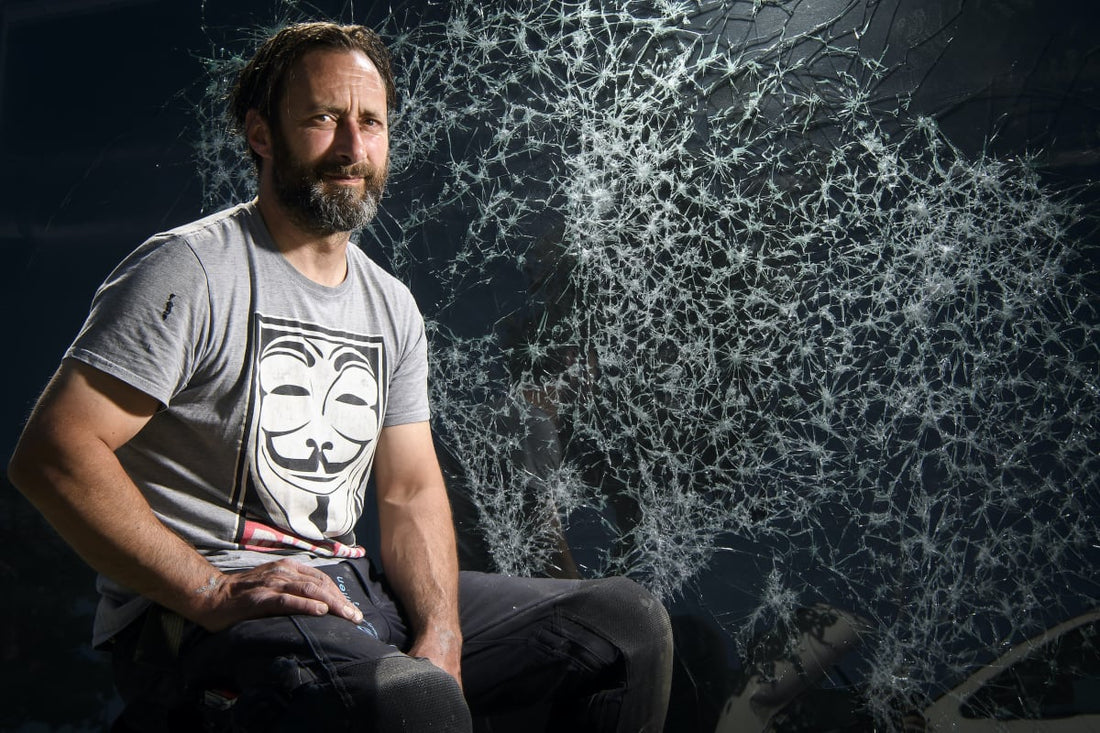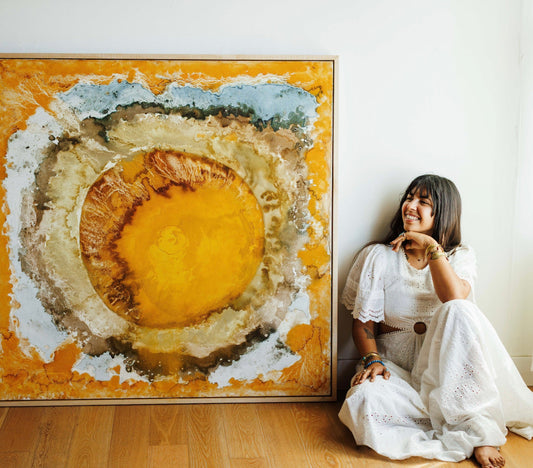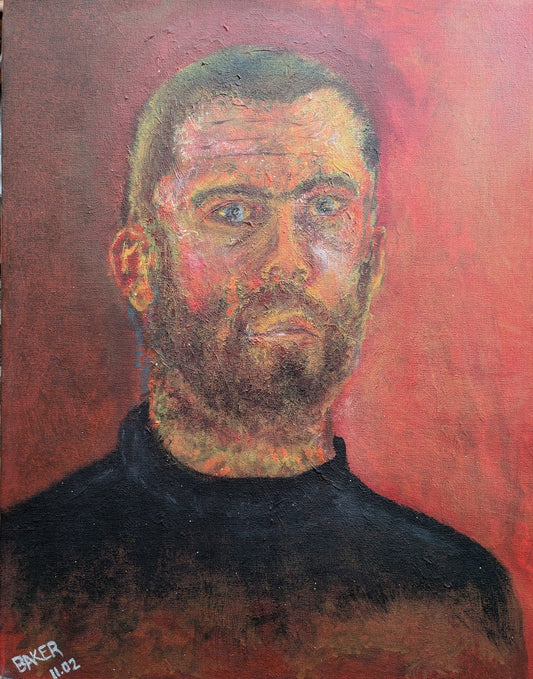Art comes in various forms—whether it be canvases, sculptures, or even on stage—art is everywhere. Even materials known for their fragility, such as glass, can be used to create art. Simon Berger, a contemporary glass artist from the small town of Niederönz, Switzerland, has his own take on glass art. Rather than blowing glass to create colorful sculptures, Berger cracks glass using a hammer to create portraits.
Berger recalls sitting at the dentist and seeing artwork by Jean Tinguely on one wall, while the opposite wall had a mirror with the artwork’s reflection. Since then, Berger has been intrigued by art, and perhaps, the mirror on the wall sparked his fascination with glass. However, instead of taking the traditional route of being an artist, Berger started as a craftsman. According to Berger, when he was younger, he worked for many years as a carpenter. As someone who has experience in handling tools, such as a hammer and other sorts of materials, he is very familiar with the feeling of what it’s like to create things. Despite never having formal artistic training, Berger was already a craftsman creating his own art.
Every artist has their own journey, and Berger’s had a lovely beginning—it all started with a gift to his wife. Using spray paint, Berger created a portrait of his wife.
“I was deeply touched to see the joy in her eyes… That moment of eliciting such an emotional response to a work of art was a unique experience for me,” Berger stated. Since then, Berger has continued to make art that “evokes a reaction and is able to be communicated to anyone.”


During his artistic exploration and development of his style, he was fascinated with art “made with the use of force and the dynamism and power with which it is created.” This is where Berger began exploring glass as his medium. “The materiality of glass has a mind of its own,” according to Berger. It cracks and breaks in its own way, but with his search for something unique, glass has completely sparked his drive.
Speaking of glass, there are certain factors that Berger has to keep an eye on. “The brutality of the cracks varies depending on the thickness of the glass and the safety film that holds the work together,” Berger stated. Therefore, if he’s working on large panes, the glass can’t be too thin, or else it will break. Even though Berger creates art by cracking glass, he wants to be able to manipulate it. Glass is a fragile material, and “mistakes cannot be easily painted over… One wrong blow with the hammer can mean… [scraping] the whole portrait,” according to Berger, “it is quite ironic.”

His artworks have various scales. Most of his two-dimensional pieces are in a fixed square, however, it changes depending on the project he is working on. To create his glass portraits Berger developed his special hammer that is best equipped to handle his technique. At the same time, his glass art requires support, which he makes himself using wood and aluminum.
Once Berger has his materials ready and set up, Berger begins his creative process. According to him, he starts by visiting the exhibition spaces and by doing so, he tries to gather inspiration. Sometimes, this inspiration comes easily while others require some more research after the visits. “I want to give the visitors to the exhibition a theme that is rooted in the place itself,” Berger stated, and each exhibit is a way to challenge himself through exploring new theme ideas.


To add to the exploration of new themes, Berger refers to his portraits, particularly his earlier works, as “morphogenesis,” which is defined as “the process of formation of organisms, by a mechanical process involving force that generates stress.” Even though his artworks are not scientifically organic forms, Berger uses force to bring the portraits to life, “thus creating a depiction of an ‘organism.’” Through time and various artistic experimentation, Berger’s artworks have evolved and have continued to grow.
“It is an unbelievably great feeling when I am given a lot of freedom to devote myself to the themes that interest me for the creation of an exhibition,” Berger said, “when I see people’s positive reactions to the finished works, it always inspires me to continue.”

When looking at his glass portraits, most of them, if not all, are images of women. According to Berger, he has always been interested in the human face as a subject. “Reading the features of a person’s face, the expression, are things that all cultures do,” Berger stated. However, he chooses to portray women because he’s interested in the “contrast between the softness of the features, the strong gaze, and my handling of the material.” At the same time, he likes to “visualize narratives” with his artworks by incorporating a theme that is rooted in the place where his exhibition is.
Berger’s new exhibition, The Doors of Perception, in collaboration with the Cris Contini Contemporary Art Gallery, is currently being held at the Museo Civico in Sansepolcro, Italy. This exhibition is specific to the city as its main inspiration is Aldous Huxley, an English writer. Huxley praised the city and its culture. His writings had such a strong influence that during World War II, a British officer remembered Huxley's stories, and was so moved that he halted the planned attack on Sansepolcro. Huxley was also known for experimenting with “mind-altering drugs in a scientific setting and exploring the question of identity and perception”. Berger was thus inspired to create abstract portraits of Huxley. This exhibition will be open until September 30, 2023.
For more information about Simon Berger, visit his website at www.simonberger.art or follow his Instagram at @simonberger.art.
©ArtRKL™️ LLC 2021-2023. All rights reserved. This material may not be published, broadcast, rewritten or redistributed. ArtRKL™️ and its underscore design indicate trademarks of ArtRKL™️ LLC and its subsidiaries.





